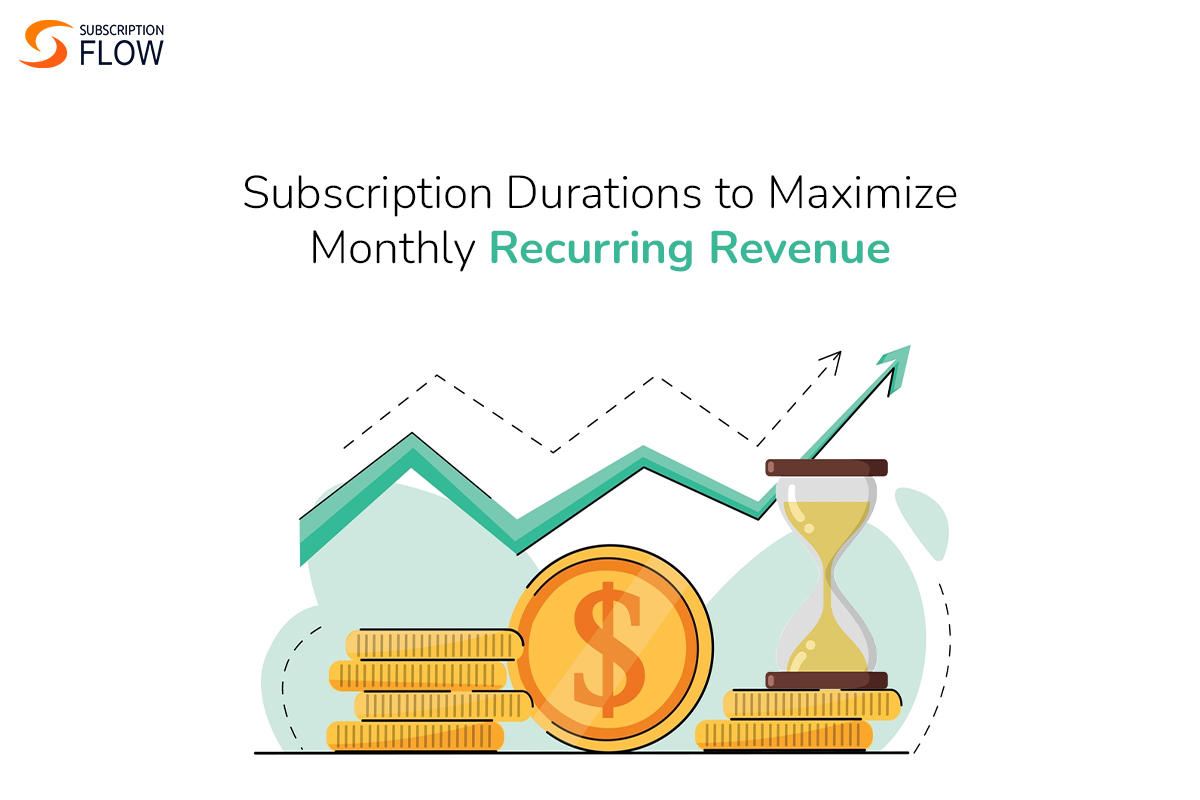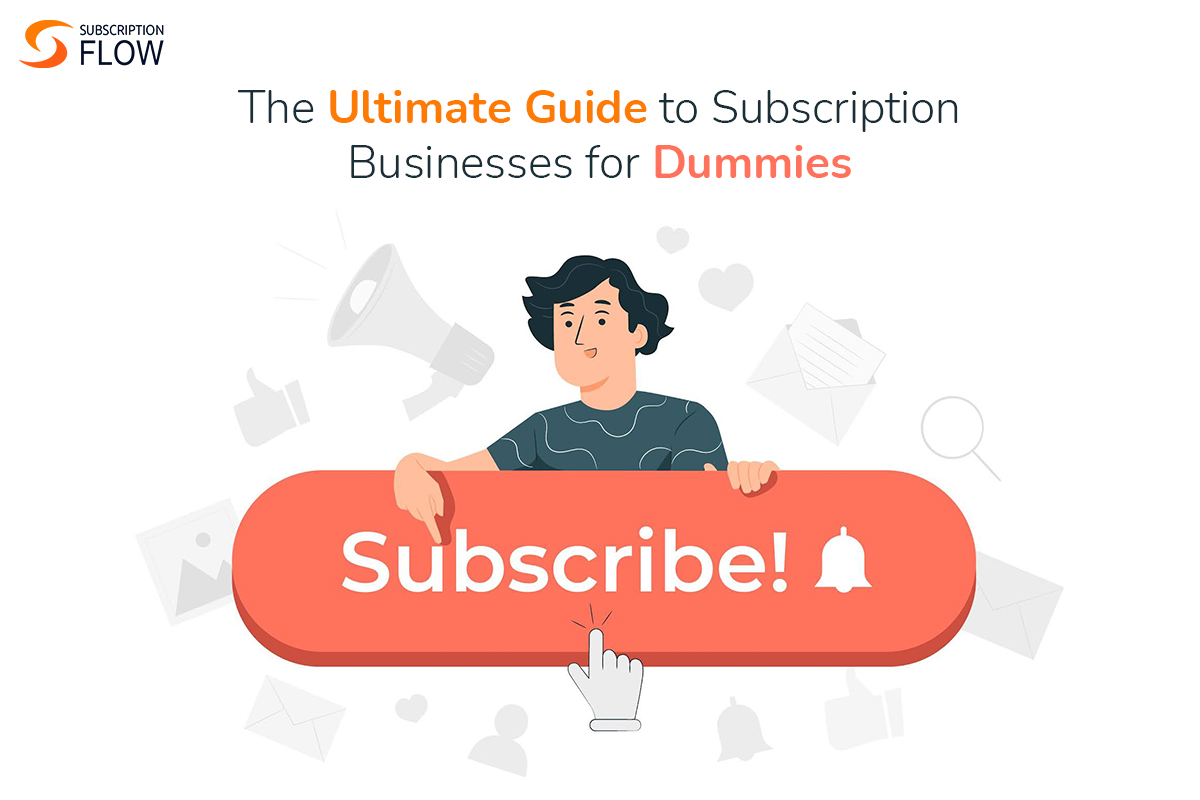
Subscription Durations to Maximize Monthly Recurring Revenue
Subscriptions have gained immense popularity in recent years, turning the traditional notion of customer loyalty into a means of securing highly profitable recurring revenue for your business.
In an aggressively competitive marketplace, amid the rising concerns of subscription fatigue, finding the sweet spot for subscription durations to maximize revenue growth has become an art form. This is because optimizing your subscription duration can prove to be critical to customer retention, monthly recurring revenue growth, and overall business success.
Whether you’re navigating the dynamic landscape of e-commerce, the captivating world of magazines, or the cutting-edge realm of SaaS, join us as we unravel the secrets to optimizing subscription durations and unlocking the true power of MRR.
In this blog, we delve into the world of MRR from the perspective of different verticals, including e-commerce, magazines, and SaaS, and explore the ideal subscription durations for each.
How is MRR Connected to Subscription Duration?
Monthly recurring revenue (MRR) refers to the total income your business earns in a month from subscriptions billed monthly, annual subscriptions renewing in the same period, and any supplementary recurring revenue from add-ons and cross-sells. Subscription duration, on the other hand, refers to the length of time for which customers commit to your subscription offering.
Read More: What is MRR, And, Why Is It Inevitable for Measuring Recurring Revenue for Subscription Businesses?
The connection between MRR and subscription duration, therefore, is quite intuitive – the longer the subscription duration, the higher your potential monthly recurring revenue.
Longer subscription durations offer businesses a secure, stable, and predictable revenue stream over an extended period. This longer commitment provides financial stability and allows businesses to plan for the future, allocate resources effectively, and invest in growth initiatives.
The Importance of Striking the Right Balance
Having said that, it is crucial to strike a balance when determining the ideal subscription duration for your offering. This is because shorter durations, such as monthly or quarterly options:
- offer greater flexibility and help to acquire customers who are hesitant to commit without testing out the waters, have changing preferences, or are hesitant to commit long-term.
- allow businesses to continuously engage with customers, adapt to evolving market trends, and address customer needs promptly.
What Factors to Consider When Choosing the Right Duration?
Finding the optimal subscription duration is a strategic decision that requires careful analysis, experimentation, and a deep understanding of the target market. It depends on various factors including:
- the nature of the business
- industry norms
- customer preferences
- the value proposition of the offerings
Aligning subscription durations with customer expectations and providing value that extends throughout the chosen duration can enable businesses to maximize their MRR and foster long-term customer relationships.
Optimal Subscription Durations for Different Verticals
1. E-commerce Vertical
In the e-commerce space customers purchase physical goods and products which is why shorter subscription durations often yield better results.
Offering monthly or quarterly subscriptions furnishes convenience and flexibility for customers who prefer to experiment with new products or update their selections. For example, if you are a cosmetic company offering a subscription for a skincare product, you would have much better luck with monthly or quarterly replenishment than an annual plan. After all, your customer may want to try a different product or change their mind about the value of your offering,
Shorter durations also allow businesses to maintain engagement and showcase the latest trends, encouraging repeat purchases and minimizing customer churn.
2. Magazine and Newspaper Vertical
Magazines and newspapers are perhaps the oldest industry following the subscription-based model to deliver exclusive content to their readers. For this vertical, longer subscription durations, such as annual or biennial options, tend to be more effective.
Readers often perceive magazines as a long-term investment, seeking a comprehensive and immersive experience. Longer durations offer cost savings, consistent access to quality content, and reduced hassle of renewing subscriptions again and again when you are convinced of the continued value of the publication.
3. SaaS (Software as a Service) Vertical
In the SaaS industry, where software solutions are delivered through cloud-based subscriptions, finding the optimal duration is a bit more complex and depends on various factors. Shorter durations, like monthly or quarterly plans, are beneficial for customers looking to evaluate the software’s added value by implementing it for short-term projects, or experience flexibility in scaling their usage.
However, longer subscription durations, such as annual contracts, can provide cost savings, promote customer loyalty, and simplify budgeting for businesses. A good example could be Adobe’s subscription options that allow you to pay monthly for annual subscriptions at a much better price incentivizing retention.
4. Media Streaming Vertical
With the rapid growth of media streaming platforms, determining the ideal subscription duration is crucial. The most prevalent approach in this vertical is to offer monthly subscriptions, allowing customers to access a vast library of content on-demand.
Monthly durations align with changing viewing preferences, giving subscribers the freedom to cancel or switch platforms easily. However, some platforms also offer discounted annual subscriptions to incentivize long-term commitment and reduce customer churn.
Conclusion
When it comes to optimizing monthly recurring revenue, businesses need to consider the unique characteristics of their respective verticals. E-commerce benefits from shorter durations, enabling agility and product exploration, while magazines thrive with longer durations, capitalizing on the investment mindset of readers.
SaaS companies find a balance between flexibility and stability by offering a range of options, and media streaming platforms strike a chord with monthly plans while providing annual alternatives for committed viewers.
Ultimately, understanding customer preferences and aligning subscription durations with the value proposition of each vertical can unlock the true potential of monthly recurring revenue by maximizing renewals, fostering long-lasting customer relationships, and fueling revenue growth.










